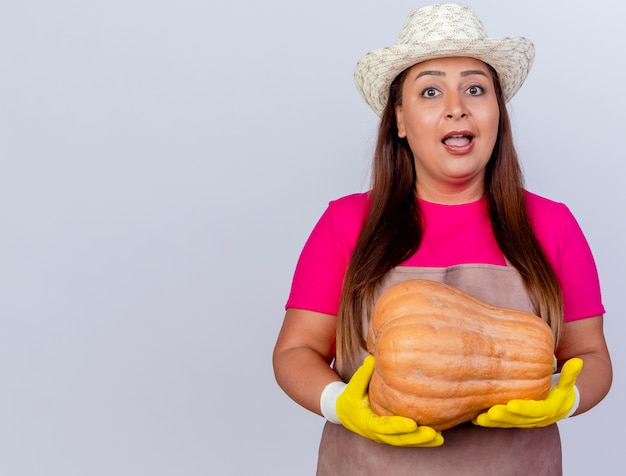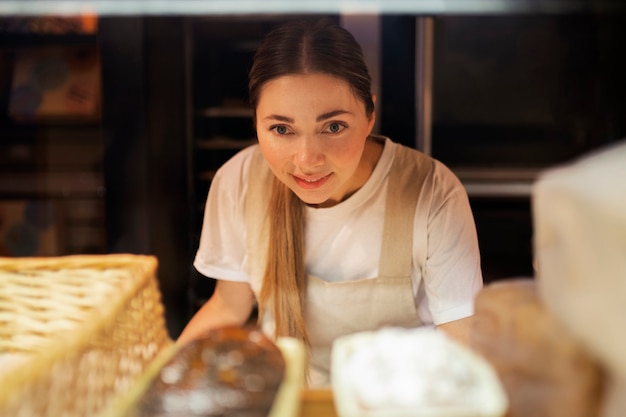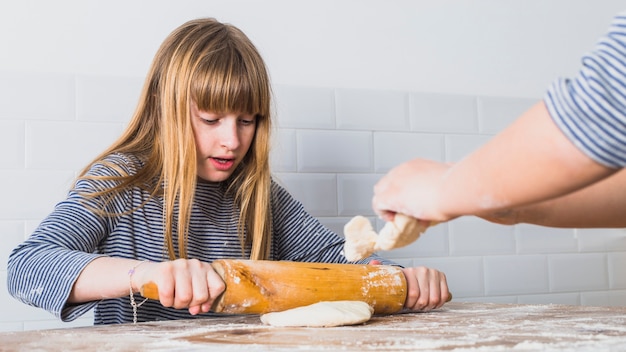As a lifelong baker, I've spent countless hours in my kitchen, experimenting with different recipes and techniques, all in pursuit of that perfect loaf of bread. It's a quest that's as much about the science of baking as it is about the art of creating something beautiful and delicious. And one of the most crucial aspects of this journey is understanding the ideal baking temperature. It's like finding the sweet spot for any other skill - it's all about balance. Too high, and you risk burning the outside before the inside is cooked through. Too low, and your bread might end up dense and undercooked. So, let's embark on this journey together, exploring the intricacies of baking temperatures and discovering the secrets to crafting the perfect crust and airy crumb.
(Part 1) The Importance of Temperature: A Baking Thermometer for the Soul

Imagine this: you've carefully kneaded your dough, let it rise beautifully, and meticulously shaped it into a masterpiece. You're filled with anticipation, picturing that golden-brown crust and the delicious aroma that's soon to fill your kitchen. But then, disaster strikes! The oven temperature is off, and your bread ends up a pale, flat, and disappointing mess. This is why understanding the crucial role of baking temperature is vital for any baker, whether you're a seasoned pro or a curious beginner. It's like having a baking thermometer for the soul – it guides you towards the perfect outcome.
The Science Behind It: Heat, Gluten, and a Rise to Perfection
The science behind baking temperature is fascinating. When you bake bread, the heat from the oven penetrates the dough. This heat triggers a chemical reaction, causing the gluten proteins to set and create a sturdy structure. The steam generated within the dough helps it rise, resulting in a light and airy texture. But here's the catch - if the temperature is too high, the gluten proteins set too quickly, resulting in a dense and chewy crumb. On the other hand, if the temperature is too low, the gluten won't develop properly, leading to a doughy and undercooked loaf.
Think of it like this: gluten is like a delicate dance. It needs the right amount of heat to develop its full potential. Too much heat, and it becomes rigid and unforgiving. Too little heat, and it remains weak and unreactive. The perfect baking temperature allows for a graceful waltz, resulting in a bread that is both beautiful and delicious.
(Part 2) The Perfect Temperature Zone: Finding the Sweet Spot

So, what is the ideal baking temperature for bread? While there's no one-size-fits-all answer, a good general guideline is to aim for 400°F (200°C). This temperature allows for quick browning and creates a satisfyingly crisp crust. It's like finding the sweet spot in a symphony – it allows all the elements to come together in perfect harmony.
But, as with any symphony, there are variations and nuances that can enhance the overall experience. The perfect baking temperature can be influenced by a variety of factors, much like the different instruments in an orchestra.
Factors Influencing Baking Temperature: A Symphony of Bread
- Type of Bread: A lighter loaf like sourdough requires a slightly lower temperature, around 425°F (220°C), to ensure a slow rise and prevent burning. It's like a solo violin, needing a more delicate touch to bring out its unique melody. While a denser bread like rye can handle a slightly higher temperature, around 450°F (230°C), for a more robust crust. It's like a powerful bass drum, demanding a bit more energy to create its booming rhythm.
- Size and Shape: A smaller loaf will bake faster than a larger one. Therefore, you might need to reduce the temperature for smaller loaves to prevent burning. It's like a small flute, needing a gentler approach to prevent it from getting overwhelmed by the other instruments. Similarly, a loaf with a thinner crust might benefit from a slightly lower temperature to avoid over-browning. It's like a delicate cello, requiring careful attention to prevent its delicate strings from snapping.
- Oven Type: Electric ovens tend to be less consistent in temperature than gas ovens. So, you might need to adjust the temperature slightly to achieve your desired results. It's like the difference between a grand piano and a digital keyboard – both can create music, but they require different approaches to get the best sound.
(Part 3) Tips for Achieving the Right Temperature: Mastering the Oven

Now that we've established the importance of temperature and factors that influence it, let's delve into practical tips to ensure your bread bakes perfectly. Remember, consistency is key!
Preheating is Key: Setting the Stage
Always preheat your oven for at least 15 minutes before baking your bread. This allows the oven to reach its desired temperature and create a uniform heat distribution. It's like warming up a stage before a performance - it ensures that all the elements are ready to create a masterpiece. When your bread goes into the oven, it encounters the full heat needed to rise and bake evenly, resulting in a beautiful loaf with a consistent crust.
Use an Oven Thermometer: Checking the Orchestra
Don't just rely on your oven's dial. Invest in an oven thermometer to ensure your oven is accurately reaching the desired temperature. This tiny investment can make a big difference in the consistency of your bread baking. It's like having a conductor for your oven – it ensures that all the instruments are playing in sync. Remember, even a small deviation from the intended temperature can impact the outcome, especially when baking delicate loaves like sourdough.
Don't Open the Oven Door!: Maintaining the Rhythm
Resist the temptation to peek at your bread during the first 20-30 minutes of baking. Opening the oven door causes a sudden drop in temperature, potentially hindering the rise of your bread and impacting the crust formation. It's like stopping a symphony in the middle of a crescendo – it disrupts the flow and can lead to an uneven outcome. Remember, patience is key in baking, and the wait will be worth it!
(Part 4) Understanding Baking Times: The Duration of Deliciousness
While temperature is crucial, it's not the only factor determining a perfect loaf. Baking times play a vital role, too. It's like a dance between heat and time – they work together to transform dough into delicious bread.
Factors Influencing Baking Time: The Tempo of Transformation
- Size and Shape: A smaller loaf will bake faster than a larger one. A loaf with a thinner crust will also bake faster. So, adjust the baking time accordingly to prevent over-browning and ensure even cooking. It's like the difference between a short, energetic piece and a long, drawn-out symphony – the length of the musical piece affects the overall pace.
- Type of Bread: Some breads, like sourdough, require longer baking times due to their complex fermentation process. While others, like quick bread, bake faster due to the absence of a lengthy rising period. It's like the difference between a classical concerto and a jazz improvisation – the musical style influences the tempo and duration of the performance.
- Oven Type: Electric ovens tend to cook more evenly than gas ovens, but they might need slightly longer baking times. Experiment to find the optimal time for your specific oven. It's like the difference between a traditional orchestra and a modern electronic ensemble – the technology used impacts the sound and timing.
(Part 5) Checking for Doneness: The Signs of a Perfect Loaf
How do you know when your bread is perfectly baked? You need to learn to trust your senses and use various methods to check for doneness. It's a combination of touch, sight, and sound – a sensory orchestra of bread.
The Sound Test: The Symphony of a Hollow Loaf
Gently tap the bottom of the loaf. If it sounds hollow, it's likely done. This is the sound of a perfectly cooked loaf – it's a symphony of deliciousness! The sound is a testament to the airy crumb and the cooked-through core. It's like the perfect ending to a musical piece – it leaves you satisfied and wanting more.
The Touch Test: The Firmness of a Well-Baked Loaf
Carefully press the top of the loaf. If it springs back, it's done. It's like a pillow – it should be firm but yield slightly to your touch. This indicates that the crust is firm and the interior is cooked through. Avoid pressing the loaf too hard, as it might collapse. It's like testing the tension of a violin string – you want it to be firm but not break.
The Look Test: The Golden Hues of a Maillard Reaction
The crust should be a deep golden brown, and the loaf should be evenly browned on all sides. This signifies the Maillard reaction – a chemical reaction that creates the browning and flavour. It's like the vibrant colours of a painting – it showcases the artistry of baking.
(Part 6) Common Baking Mistakes: Avoiding the False Notes
Even experienced bakers make mistakes sometimes. It's part of the learning process. So, let's explore some common mistakes to avoid and troubleshoot baking issues. Remember, mistakes are just opportunities to learn and improve, to fine-tune the symphony of bread.
Over-Baking: The Dissonance of a Dry Loaf
Over-baking can result in a dry and hard loaf. This is like a tragedy in the baking world – a beautiful loaf ruined by excessive heat. To prevent this, check your bread regularly for doneness and remove it from the oven as soon as it's done. It's like stopping the music at the perfect moment, before it becomes too loud and overwhelming.
Under-Baking: The Incomplete Melody of a Doughy Loaf
Under-baking results in a doughy and raw loaf. It's like a half-cooked meal – it lacks the essential transformation. To avoid this, ensure your bread is cooked through, using the techniques mentioned earlier. If it's not cooked through, continue baking for a few more minutes, checking for doneness at regular intervals. It's like playing the final chords of a piece, ensuring that the melody reaches its full potential.
Uneven Baking: The Discord of an Unbalanced Loaf
This happens when the heat in your oven isn't distributed evenly. Your loaf might end up with burnt spots or raw areas. To avoid this, preheat your oven thoroughly and rotate the loaf during baking to ensure even heat exposure. It's like adjusting the volume of each instrument in an orchestra – you want every element to be heard and appreciated.
(Part 7) Adjusting for Different Breads: A Variety of Genres
While the general guideline of 400°F (200°C) is a great starting point, it's important to remember that every bread is different. Just like individuals have unique personalities, bread types also require specific adjustments to achieve optimal baking temperatures.
Sourdough: The Delicate Ballad of a Rustic Loaf
This rustic bread requires a lower temperature, around 425°F (220°C), to ensure slow, even rising and prevent burning. It's like a delicate dance, requiring careful attention and precision. The lower temperature allows for a more nuanced flavour development, creating a complex and satisfying taste.
Rye Bread: The Powerful Anthem of a Dense Loaf
This dense bread can handle a higher temperature, around 450°F (230°C), to achieve a robust crust and a chewy texture. It's like a strong personality, demanding a bit more heat to reach its full potential. The higher temperature ensures a more intense flavour and a satisfyingly crisp exterior.
Quick Breads: The Upbeat Groove of a Quick Loaf
These breads, like banana bread or zucchini bread, bake quickly due to the absence of a lengthy rising period. They generally require a lower temperature, around 350°F (175°C), to avoid burning the edges. It's like a quick and easy recipe, requiring less time and heat for perfect results.
(Part 8) The Importance of Experience: The Maestro of Bread
Baking bread is like a craft – it takes time, practice, and patience to master. The more you bake, the more you learn about your oven, the different breads, and the perfect temperatures for each type. Each loaf becomes a lesson, shaping your skills and refining your intuition. Remember, every baker has a unique journey, and the beauty lies in exploring and experimenting.
My Personal Journey: From Beginner to Baker
Over the years, I've learned so much about baking the perfect loaf. It's not just about following recipes; it's about understanding the science behind the process and constantly refining your technique. I've had countless mishaps and triumphs, each teaching me something new. I've learned to trust my instincts, pay attention to the subtle signs, and adjust the temperature based on the bread type and my oven's quirks. And you know what? It's the journey that makes it so rewarding. Every successful loaf is a testament to the dedication and passion I pour into baking. It's like becoming the maestro of bread, conducting a symphony of flavours and textures.
FAQs: Answering the Questions of a Baker's Heart
1. What happens if I bake bread at a lower temperature?
Baking bread at a lower temperature can result in a denser, less airy loaf with a pale crust. The gluten won't develop as quickly, and the bread might take longer to cook through. It's like playing a piece of music too slowly – it loses its energy and dynamism.
2. What happens if I bake bread at a higher temperature?
Baking bread at a higher temperature can lead to a burnt crust and a dense interior. The gluten will set quickly, preventing the bread from rising properly. You might also end up with uneven cooking, where the outside is burnt while the inside is still raw. It's like playing a piece of music too fast – it loses its control and precision.
3. How do I know if my oven is accurately measuring the temperature?
Always use an oven thermometer to ensure your oven is maintaining the correct temperature. This is essential for consistent baking results. Calibrate your oven if it's not reading accurately. It's like tuning your instruments before a performance – it ensures that everything is in harmony.
4. How do I adjust the baking time for different bread sizes?
Generally, smaller loaves will bake faster than larger loaves. You might need to reduce the baking time by 5-10 minutes for smaller loaves. Use the touch and sound test to check for doneness. It's like adjusting the length of a musical piece based on the number of performers – a smaller group might require a shorter performance time.
5. What are some other tips for baking perfect bread?
Besides using the right temperature, here are some additional tips:
- Use high-quality ingredients, such as freshly milled flour and good yeast. It's like using the finest instruments for a symphony – the quality of the ingredients affects the overall sound and flavour.
- Don't over-knead your dough, as it can lead to a tough loaf. It's like playing a string instrument too hard – it can cause the strings to break and the sound to be harsh.
- Ensure your dough has risen properly before baking. It's like allowing the musicians to warm up before a performance – it ensures that the dough is ready to rise and create a beautiful loaf.
- Rotate the loaf halfway through baking to ensure even cooking. It's like making sure that all the instruments in the orchestra are balanced and in tune.
- Let the bread cool completely on a wire rack before slicing to allow the crust to crisp up. It's like giving the musicians a chance to rest and recover after a performance – it allows the bread to cool and develop its full flavour.
Everyone is watching

Perfect Rice Every Time: The Ultimate Guide to Cooking Rice
Cooking TipsAs a self-proclaimed foodie, I've always been a bit obsessed with rice. It's the foundation of countless cuisi...

Prime Rib Roast Cooking Time Chart: Per Pound Guide
Cooking TipsPrime rib roast. Just the name conjures images of lavish dinners, crackling fires, and hearty laughter. It’s ...

The Ultimate Guide to Cooking Asparagus: Tips, Techniques, and Recipes
Cooking TipsAsparagus. The mere mention of this spring delicacy conjures up images of vibrant green spears, crisp and burs...

Ultimate Guide to Cooking the Perfect Thanksgiving Turkey
Cooking TipsThanksgiving. Just the word conjures up images of overflowing tables laden with delicious food, the scent of r...

How Long to Bake Potatoes in the Oven (Perfect Every Time)
Cooking TipsBaked potatoes are a staple in my kitchen. They're incredibly versatile, delicious, and surprisingly easy to m...
